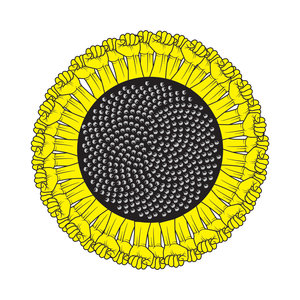Rat Tail Radish
Sorry, I don't have a photo for this heirloom variety yet. You can find one here, along with a seed source. Hoover your mouse over the thumbnail and you can see a larger photo. I like radishes, and until a couple of years ago all I knew were the small, vibrant red, pungent, crunchy balls of flavor. Once korean cuisines entered the trendy foodie scene, the Daikon radish appeared. These large, white cylindrical shaped roots challenged what I knew and thought a radish was. Once the fascination starts, the researcher and historian kicks in, and all of sudden I have a new subject matter to explore, which makes me happy.
Now, as an advocate for heirloom vegetables and pure food, it gives me great pleasure to find different varieties of vegetables as content for what I do. This year, Rat Tail Radishes will be in my garden. When I saw the photos and description of this edible seed pod, I felt a deja vu, which is always a plus for me.
The Rat Tail Radish arrived in England in the early 1800s from Java. They made their to America, and became a very popular addition to gardens during the 1860s, and like a lot varieties fell out of vogue for a number of reasons including this snip from From Kitchen Gardens International ;
... The plant may have become a victim of the hype, begun by Mr. Bull, who exhibited the curious radish at the great International Horticultural Exhibition in London in 1866. The new unnamed radish caused a sensation and was accompanied by claims of spectacular performance. It was claimed that its pods grow three inches overnight and attain a length of three to four feet. It was “destined to supersede root radishes of all kinds, and render us no longer dependent upon crops that were uncertain, and good only at certain times.” It was predicted that breeding with the garden radish would produce hybrids with both edible pods and roots. Soon there were others reporting growing it, and the descriptions, names used and place of origin were so different that it caused much confusion in the botanical and horticultural world. The disputes over name and classification were more easily settled than the claims of its marvelous qualities. ...
I found the above an interesting read about the Rat Radish. Again, here's the link.
All root varieties of radishes produce edible seeds pods, the unique aspect fo the Rat Tail variety is they are grown for their edible seed pods, not for their root. The plants grow up to 5 feet tall, produce delicate flowers which I've seen described ad edible also. Harvest the pods when small, up to 4 inches in length, they can become tough when they get large from what I've read. They attract pollinators, always a plus, and the young leaves are also edible, which makes sence Since they are members of the Brassicaceae family, otherwise know as the mustards, or cabbage family.
You can search for Madras seeds or Rat Tail Radish if you want to do your own research. And finally, I love the name. It adds to the quirky nature of heirloom vegetables.
